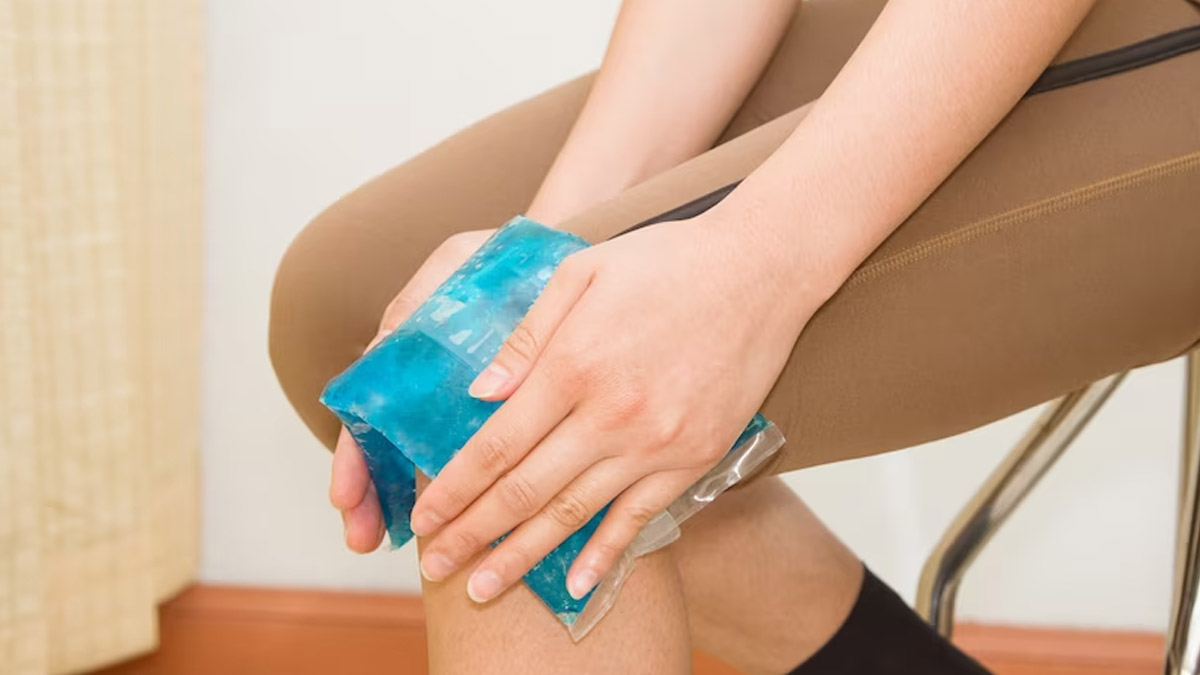
Whether you've experienced a throbbing headache, a sprained ankle, or a muscle strain, the age-old question remains: hot or cold pack? We've all been caught in the dilemma of choosing between these contrasting therapies, each with its distinct benefits and ideal usage scenarios. In this article, Dr Yash Javeri Director Critical Care and Emergency Medicine, uncovers the secrets of when and how to utilise these packs for maximum relief.
Table of Content:-
Dr Javeri said, “From a health expert's perspective, the choice between hot and cold packs depends on the specific situation and the desired therapeutic effect.”
According to the Journal of Rehabilitation Medicine, hot packs can prevent tissue from cooling off after exercise, maintain tissue warmth, speed up metabolism and inflammatory factor clearance, and enhance blood flow, all of which can help patients feel less discomfort. On the other hand, the immersion temperature of CRYO is a treatment that involves very brief exposures to extremely cold, dry air for the entire patient or to a therapeutic area. Cold-Water Immersion (CWI) is typically 15°C.
Cold Pack Vs Hot Pack

Cold Packs
Reducing Inflammation
Cold packs, such as ice packs or gel packs, are commonly used to reduce inflammation and swelling. When applied to an injured area, cold temperatures constrict blood vessels, reducing blood flow and decreasing the release of inflammatory substances. This can help alleviate pain and minimise swelling in acute injuries like sprains, strains, or bruises.
Acute Pain Relief
Cold therapy can also provide temporary relief for acute pain, such as migraines, dental pain, or postoperative discomfort. The numbing effect of cold temperatures can help dull nerve endings, providing a soothing sensation.
Timing
Cold packs are typically applied for short durations, 15-20 minutes at a time. Longer exposure to cold can potentially cause tissue damage, so it's important to follow the recommended time frame and avoid direct contact with the skin by using a cloth or towel as a barrier.
Also Read: Expert Explains Different Types Of Cold Therapy & Their Effectiveness
Hot Packs

Relaxing Muscles
Heat therapy, in the form of hot packs, heating pads, or warm towels, can help relax muscles, relieve tension, and promote blood flow. It can be beneficial for chronic muscle pain or stiffness, such as in cases of muscle spasms, arthritis, or chronic back pain.
Increasing Flexibility
Heat can increase flexibility and range of motion by relaxing muscles and connective tissues. It's often recommended before performing stretching exercises or physical activities, as warm muscles are less prone to injury.
Also Read: Cold Shower Vs Hot Shower: Which Is Better And Why
Promoting Circulation
Heat therapy dilates blood vessels, improving blood flow to the area. This increased circulation can assist in delivering oxygen and nutrients to the tissues, promoting healing and tissue repair.
Timing
Heat therapy is generally applied for longer durations than cold therapy, typically 20-30 minutes. However, it's important to avoid prolonged exposure to heat to prevent burns or skin damage. Use a towel or cloth to regulate the temperature and protect the skin.
Things You Must Know

Dr Javeri said, “It's important to note that there are situations where the application of either hot or cold packs may be contraindicated. For instance, if you have poor circulation, diabetes, sensory disorders, open wounds, or certain skin conditions, it's advisable to consult with a healthcare professional before using heat or cold therapy.”
In some cases, alternating between hot and cold therapy, known as contrast therapy, may be recommended for specific conditions or injuries. This technique involves using both hot and cold packs alternately to take advantage of the benefits of each. However, the use of contrast therapy should be guided by a healthcare professional.
Bottomline
Dr Javeri concluded, “Remember, while hot and cold packs can provide temporary relief for certain conditions, they are not meant to replace professional medical advice. If you have persistent or worsening symptoms, it's important to consult with a healthcare provider for a proper diagnosis and treatment plan.”
Disclaimer
The information in this article is provided by the expert, however, we advise you to discuss with your healthcare expert to find a treatment tailored to your needs.
Also watch this video
How we keep this article up to date:
We work with experts and keep a close eye on the latest in health and wellness. Whenever there is a new research or helpful information, we update our articles with accurate and useful advice.
Current Version